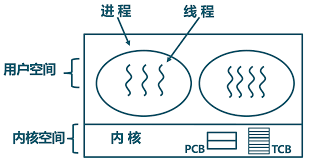Android C++ 系列:Linux 线程(四)线程同步

多个线程同时访问共享数据时可能会冲突,这跟我们前面信号文章所说的可重入性是同样的问题。比如两个线程都要把某个全局变量增加 1,这个操作在某平台需要三条指令完成:
从内存读变量值到寄存器;
寄存器的值加 1;
将寄存器的值写回内存
假设两个线程在多处理器平台上同时执行这三条指令,则可能导致下图所示的结果,最后变量只加了一次而非两次。

实例:
我们创建两个线程,各自把 counter 增加 5000 次,正常情况下最后 counter 应该等于 10000,但事实上每次运行该程序的结果都不一样,有时候数到 5000 多,有时候数到 6000 多。
1. 线程为什么要同步
共享资源,多个线程都可对共享资源操作;
线程操作共享资源的先后顺序不确定;
处理器对存储器的操作一般不是原子操作。
2. 互斥量
mutex 操作原语:
pthread_mutex_t
pthread_mutex_init
pthread_mutex_destroy
pthread_mutex_lock
pthread_mutex_trylock
pthread_mutex_unlock
2.1 临界区(Critical Section)
保证在某一时刻只有一个线程能访问数据的简便办法。在任意时刻只允许一个线程对共 享资源进行访问。如果有多个线程试图同时访问临界区,那么 在有一个线程进入后其他所有试图访问此临界区的线程将被挂起,并一直持续到进入临界区的线程离开。临界区在被释放后,其他线程可以继续抢占,并以此达到用原子方式操作共享资源的目的。
2.2 临界区的选定
临界区的选定因尽可能小,如果选定太大会影响程序的并行处理性能。
2.3 互斥量实例
实例:
这样运行结果就正常了,每次运行都能数到 10000。
3. 死锁
同一个线程在拥有 A 锁的情况下再次请求获得 A 锁;
线程一拥有 A 锁,请求获得 B 锁;线程二拥有 B 锁,请求获得 A 锁死锁导致的结果是什么?
4. 读写锁
读共享,写独占
pthread_rwlock_t
pthread_rwlock_init
pthread_rwlock_destroy
pthread_rwlock_rdlock
pthread_rwlock_wrlock
pthread_rwlock_tryrdlock
pthread_rwlock_trywrlock
pthread_rwlock_unlock
实例:
5. 条件变量
条件变量给多个线程提供了一个汇合的场所,条件变量控制原语:
pthread_cond_t
pthread_cond_init
pthread_cond_destroy
pthread_cond_wait
pthread_cond_timedwait
pthread_cond_signal
pthread_cond_broadcast
生产者消费者模型:
6. 信号量
信号量控制原语
sem_t
sem_init
sem_wait
sem_trywait
sem_timedwait
sem_post
sem_destroy
生产者消费者实例:
7. 进程间锁
7.1 进程间 pthread_mutex
pshared:
线程锁:PTHREAD_PROCESS_PRIVATE ;
进程锁:PTHREAD_PROCESS_SHARED;
默认情况是线程锁
实例:
7.2 文件锁
使用 fcntl 提供文件锁
实例:
8. 总结
本文介绍了线程同步机制:为什么要同步、互斥量、死锁、读写锁、条件变量、信号量、进程间锁等概念与机制以及相关示例。
版权声明: 本文为 InfoQ 作者【轻口味】的原创文章。
原文链接:【http://xie.infoq.cn/article/b0f9f32057f49ced328bb0353】。文章转载请联系作者。












评论